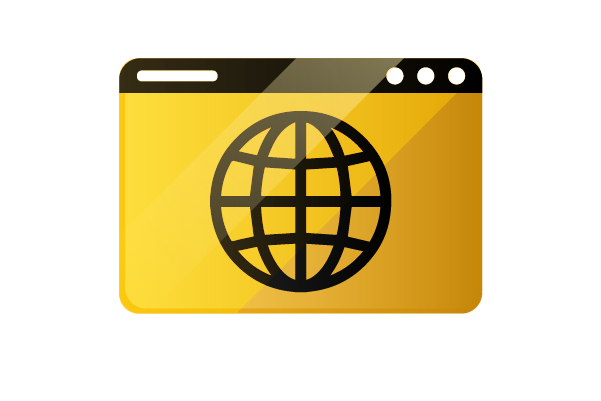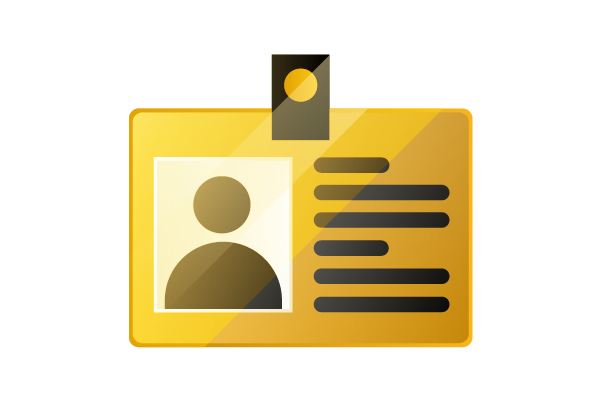In recent years, Decentralized Finance, commonly known as DeFi, has emerged as a disruptive force, fundamentally altering our perceptions of traditional financial systems. Gone are the days of exclusive reliance on centralized banking institutions; now, we are witnessing an era where financial control is handed back to individual users, thanks to the decentralized nature of blockchain technology. Central to this transformation is the DeFi wallet, a digital tool that serves as the gateway for users to access, manage, and transact with their decentralized assets across various platforms.
For many, the DeFi wallet remains an enigmatic component of the expansive DeFi ecosystem. How does it work? What powers its operations, and how does it ensure secure access to assets across different platforms? This article aims to demystify the complexities surrounding DeFi wallet development, shedding light on its architecture, functionalities, and the security mechanisms that ensure its robustness.
Whether you are a developer keen to understand the technical nuances, an investor aiming to familiarize yourself with the tools of the trade, or simply a DeFi aficionado hungry for knowledge, a deeper comprehension of DeFi wallet development can provide valuable insights into the internal workings of the rapidly expanding DeFi landscape. So, strap in and embark on this enlightening journey with us as we delve into the fascinating world of DeFi wallets!
The Importance of DeFi Wallets in the Digital Age
 We find ourselves in the midst of a transformative era characterized by the surge of digital assets and currencies. As this digital revolution unfolds, the demand for secure, user-friendly storage methods becomes more pronounced than ever before.
We find ourselves in the midst of a transformative era characterized by the surge of digital assets and currencies. As this digital revolution unfolds, the demand for secure, user-friendly storage methods becomes more pronounced than ever before.
In this context, DeFi (Decentralized Finance) wallets stand out as indispensable tools for the modern investor. They serve as the primary access points to a plethora of decentralized platforms, playing a critical role in ensuring that users’ assets are not only readily available but also shielded from potential threats.
One of the primary strengths of DeFi wallets lies in their cryptographic underpinnings. By leveraging advanced cryptographic principles, these wallets deliver unparalleled security measures. This is vital in an online world rife with sophisticated hacking attempts and ever-evolving threats. By using DeFi wallets, users can significantly mitigate risks associated with unauthorized access or potential breaches.
Beyond security, the very essence of DeFi hinges on the principle of autonomy and the elimination of middlemen. For centuries, traditional banking systems have positioned themselves as the essential intermediaries, often dictating terms and conditions to their users. In stark contrast, DeFi wallets champion a revolutionary idea: complete control over one’s assets. By using these wallets, individuals can exercise full autonomy over their finances, bypassing any need for a third-party gatekeeper.
Additionally, as the DeFi ecosystem continues to flourish, we witness an explosion in the number and variety of tokens and digital assets available in the market. Users need a consolidated platform where they can efficiently manage and track these assets.
Modern DeFi wallets rise to this challenge by offering seamless integration capabilities with a myriad of decentralized platforms. This integration transforms the wallet from a mere storage tool to a comprehensive financial management system, helping users navigate the complex world of digital finance with ease and confidence.
Also Read: 7 Best Online Equity Trading Platforms (2023)
Steps to Start Your DeFi Wallet Development
Developing a DeFi (Decentralized Finance) wallet requires careful planning and execution. Each step is crucial to ensure the reliability and success of the final product. Here’s a detailed, step-by-step guide to help you navigate the process:
1. Understanding the Basics
Before jumping into wallet development, it’s essential to have a comprehensive grasp of the foundational technologies and concepts. Dive deep into blockchain technology, focusing on aspects like consensus algorithms, smart contracts, and transaction mechanics.
Parallelly, familiarize yourself with cryptography, the keystone of secure blockchain transactions and data integrity. Delve into the mechanisms that drive DeFi – its operation sans central authorities, token roles, and the various protocols and platforms underpinning decentralized financial services. Platforms like Ethereum, given their pivotal role in the DeFi movement, deserve special consideration.
2. Choosing the Right Platform
While Ethereum enjoys a prominent position, the DeFi landscape is expansive. Binance Smart Chain may appeal to those prioritizing speed and cost-effectiveness, whereas Polkadot offers unique interoperability advantages. Your platform choice will influence factors such as scalability, transaction fees, and integration potential with other systems.
3. Design and User Experience
The appeal and retention of users often hinge on the user-friendliness of your application. Beyond just aesthetics, prioritize a design that melds beauty with functionality. Ensure both seasoned crypto enthusiasts and newcomers find the interface intuitive. Elements like a well-organized layout, straightforward instructions, fluid navigation, and efficient transaction procedures are paramount.
4. Security Protocols
Given the decentralized nature of DeFi and its appeal to malicious actors, ensuring robust security is non-negotiable. Incorporate high-end security features such as two-factor authentication (2FA) for reinforced protection during logins and transactions. Leverage cold storage solutions to keep a significant portion of users’ assets offline, safeguarding them from potential online threats. Lastly, deploy top-notch encryption methods for data protection, both when it’s in transit and at rest.
Common Challenges in DeFi Wallet Development
Creating a DeFi wallet isn’t without its challenges. Interoperability is a major concern, given the multitude of existing blockchain platforms. Ensuring your wallet communicates smoothly across chains is paramount.
 Next comes the challenge of scalability. As the DeFi sector grows, so will the transaction volumes. Your wallet should be equipped to handle this surge without compromising on speed or efficiency.
Next comes the challenge of scalability. As the DeFi sector grows, so will the transaction volumes. Your wallet should be equipped to handle this surge without compromising on speed or efficiency.
Lastly, regulatory concerns can’t be ignored. The DeFi landscape is rapidly evolving, and staying compliant with international regulations is a continuous task.
Key Features to Integrate in a DeFi Wallet
1. Multi-Currency Support
With the dynamic landscape of the decentralized finance (DeFi) arena, there is an emergence of a vast array of tokens on a frequent basis. It is imperative that your DeFi wallet caters to this diversity. This involves not only supporting well-established and mainstream tokens but also paving the way for newcomers that show potential. By doing so, you provide users with the flexibility to diversify their holdings and explore newer avenues within the DeFi space.
2. Backup and Recovery Mechanisms
In the digital realm, mishaps such as loss of device or data breaches can occur unexpectedly. Recognizing this, it becomes of paramount importance to offer robust backup and recovery features within your DeFi wallet. Through this, you instill confidence in users, ensuring them that even in the face of unforeseen adversities, they will have the means to regain access to their cherished assets without hassle.
3. Integrated DApps
DeFi’s core strength and novelty stem from the array of decentralized applications (DApps) it brings to the table. By embedding these DApps directly into your wallet interface, you enhance the user experience exponentially. Not only does it offer users the convenience of accessing and transacting within these applications from a singular platform, but it also aids in the broader adoption and usage of DApps by making them easily accessible.
4. Regular Updates and Upgrades
The world of DeFi is anything but static. New platforms emerge, tokens undergo changes, and protocols get updated. Staying relevant and efficient in this dynamic ecosystem necessitates regular software updates and upgrades for your wallet. These updates are essential to ensure seamless compatibility with the latest tokens, platforms, and DeFi trends. Additionally, routine upgrades reinforce security and introduce innovative features that cater to the evolving needs of the DeFi community.
The Role of Community in DeFi Wallet Success
 A strong community can be a DeFi wallet’s greatest asset. They provide invaluable feedback, aid in troubleshooting, and are often the first to advocate for your product. Engaging with them can offer insights into what features they desire or what concerns they might have.
A strong community can be a DeFi wallet’s greatest asset. They provide invaluable feedback, aid in troubleshooting, and are often the first to advocate for your product. Engaging with them can offer insights into what features they desire or what concerns they might have.
Moreover, a community fosters trust. In the decentralized world, trust is paramount. When potential users see an active, satisfied community, they are more inclined to adopt your wallet.
Additionally, communities often spur innovation. The collective intelligence can bring forth ideas or solutions that might not have been evident otherwise. Embrace them, engage with them, and grow together.
The Future of DeFi Wallets: What to Expect
The DeFi realm is only set to expand. Wallets will play an even more critical role, acting as bridges to new platforms and innovations. We can expect more integrations with DApps, offering users a suite of financial tools in one place.
Interoperability will gain precedence. With multiple blockchains offering unique DeFi solutions, wallets that can seamlessly traverse these chains will be in high demand.
Lastly, expect enhanced security measures. As the sector grows, so will the threats. Wallets will undoubtedly incorporate advanced security measures, ensuring user assets remain invulnerable.
Best Practices for DeFi Wallet Development
- Stay Updated with the Ever-evolving DeFi Landscape: The decentralized finance (DeFi) ecosystem is known for its rapid pace of evolution, with innovations emerging almost on a daily basis.
For DeFi wallet developers, staying updated with the latest technological advancements, protocols, and market trends is not just beneficial but imperative. By doing so, they can ensure that their wallet solutions are always in line with the current needs of the market, and that they continue to serve their users effectively and efficiently.
- Security Should Always Be At The Forefront: In the world of digital assets, security is paramount. A DeFi wallet is often the gateway for users to interact with various decentralized platforms, making it a critical point of potential vulnerability. Developers must give prime importance to implementing top-notch security measures.
This involves incorporating multiple layers of encryption, two-factor authentication, cold storage solutions, and more. Additionally, it’s essential to frequently test the wallet for possible vulnerabilities through techniques like penetration testing, ensuring that assets are safe and the user’s trust is maintained.
- Value User Feedback as a Treasure: In the journey of product development, the end-users play a significant role in shaping the final output. Encouraging users to provide feedback not only helps in building a sense of community and trust but also offers the developers a unique, ground-level perspective on the product’s functionality.
Such feedback can reveal hidden issues, suggest new features, and spotlight areas that need improvement or refinement. Taking feedback seriously and making iterative enhancements based on it can lead to a more user-friendly and robust wallet experience.
- Empower the Users Through Education: The DeFi world can be intricate, especially for newcomers. Given the stakes involved, it’s crucial that users make informed decisions while interacting with the wallet and the broader DeFi ecosystem.
Developers should take the responsibility of providing ample educational resources, be it in the form of comprehensive tutorials, FAQs, explainer videos, or even webinars. By doing so, they ensure that the user not only utilizes the wallet’s full potential but also navigates the DeFi space confidently and securely.
Read Next: 5 Best Crypto Futures Trading Platforms in 2023
Conclusion:
The development of DeFi (Decentralized Finance) wallets has rapidly emerged as an exhilarating, intricate, and exceptionally fruitful endeavor in the realm of modern financial technologies. As we continue our foray into the intricate world of decentralized finance, the significance and utility of these wallets cannot be understated. They are set to redefine the way we view, manage, and transact with digital assets in an increasingly decentralized financial ecosystem.
For aspiring developers or entrepreneurs eager to dive into this venture, crafting a DeFi wallet can be a challenging task. It requires a deep understanding of blockchain technologies, security protocols, and user experience considerations. However, the returns, both in terms of financial and the potential to revolutionize the financial landscape, make the challenges worth navigating.
For others, who might be on the periphery, simply seeking knowledge or pondering investment opportunities, having a clear comprehension of DeFi and its associated wallets is crucial. This landscape, though intricate, is rich with potential and possibilities. The knowledge imparted in this guide aims to shed light on these possibilities and provide a clearer perspective for both novices and experts alike.
In a world that is quickly embracing the wonders of DeFi, the importance of secure, efficient, and user-friendly wallets cannot be emphasized enough. With the right tools in place, the horizon of opportunities in decentralized finance seems limitless, affirming the belief that in this burgeoning domain, the sky is indeed the limit!


